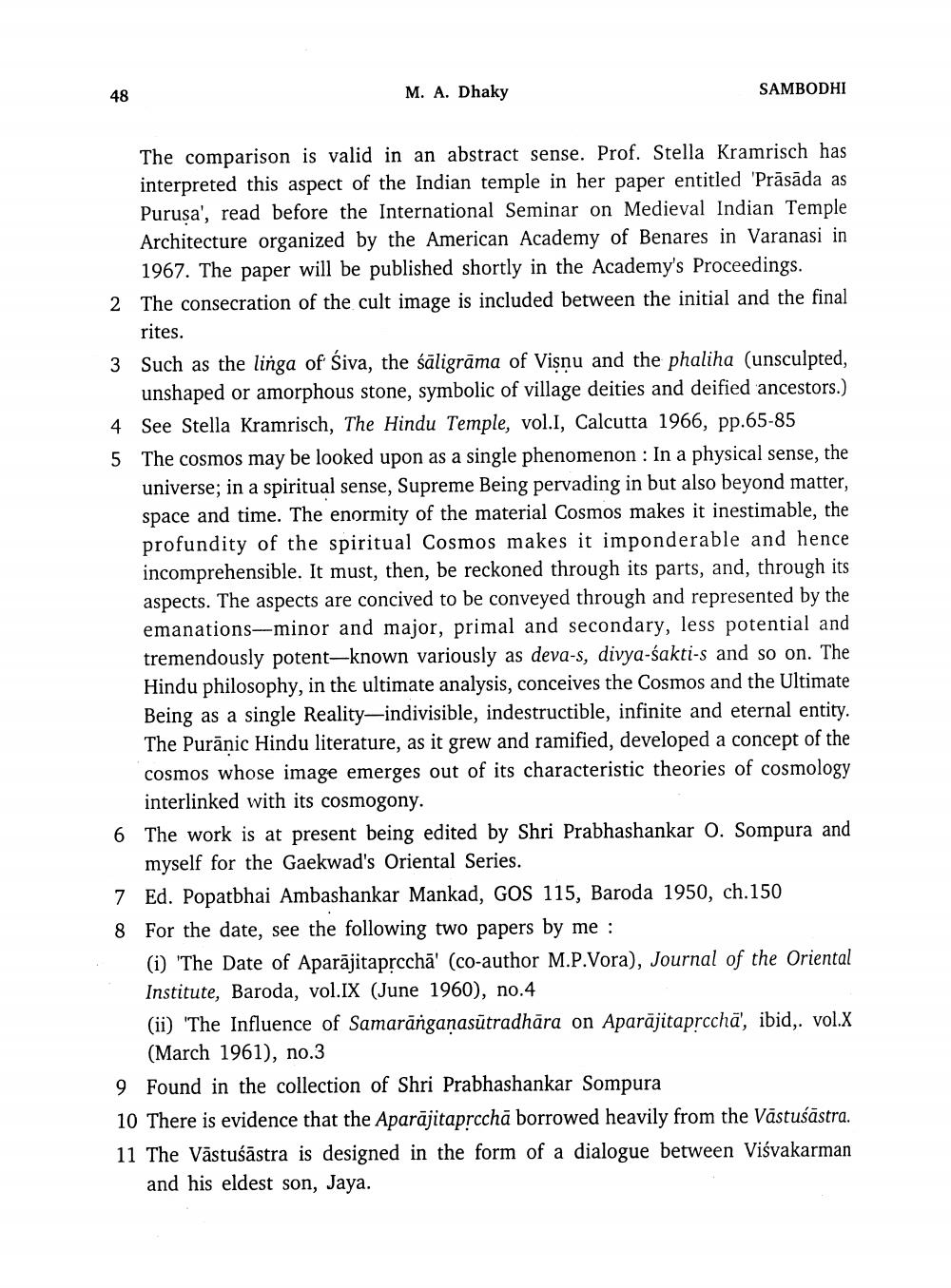________________
M. A. Dhaky
SAMBODHI
The comparison is valid in an abstract sense. Prof. Stella Kramrisch has interpreted this aspect of the Indian temple in her paper entitled 'Prāsāda as Purusa', read before the International Seminar on Medieval Indian Temple Architecture organized by the American Academy of Benares in Varanasi in
1967. The paper will be published shortly in the Academy's Proceedings. 2 The consecration of the cult image is included between the initial and the final
rites. 3 Such as the linga of Śiva, the śāligrāma of Visnu and the phaliha (unsculpted,
unshaped or amorphous stone, symbolic of village deities and deified ancestors.) 4 See Stella Kramrisch, The Hindu Temple, vol.I, Calcutta 1966, pp.65-85 5 The cosmos may be looked upon as a single phenomenon : In a physical sense, the
universe; in a spiritual sense, Supreme Being pervading in but also beyond matter, space and time. The enormity of the material Cosmos makes it inestimable, the profundity of the spiritual Cosmos makes it imponderable and hence incomprehensible. It must, then, be reckoned through its parts, and, through its aspects. The aspects are concived to be conveyed through and represented by the emanations--minor and major, primal and secondary, less potential and tremendously potent-known variously as deva-s, divya-sakti-s and so on. The Hindu philosophy, in the ultimate analysis, conceives the Cosmos and the Ultimate Being as a single Reality-indivisible, indestructible, infinite and eternal entity. The Purānic Hindu literature, as it grew and ramified, developed a concept of the cosmos whose image emerges out of its characteristic theories of cosmology
interlinked with its cosmogony. 6 The work is at present being edited by Shri Prabhashankar O. Sompura and
myself for the Gaekwad's Oriental Series. 7 Ed. Popatbhai Ambashankar Mankad, GOS 115, Baroda 1950, ch.150 8 For the date, see the following two papers by me :
(i) 'The Date of Aparājitaprcchā' (co-author M.P.Vora), Journal of the Oriental Institute, Baroda, vol.IX (June 1960), no.4 (ii) 'The Influence of Samarānganasūtradhāra on Aparājitaprcchā', ibid, vol.X
(March 1961), no.3 9 Found in the collection of Shri Prabhashankar Sompura 10 There is evidence that the Aparajitaprccha borrowed heavily from the Vāstuśāstra. 11 The Vāstuśāstra is designed in the form of a dialogue between Viśvakarman
and his eldest son, Jaya.




